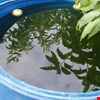


Aiming to sow the seeds of cooperation on water and to forge links across sectors, GWP Myanmar, the Myanmar Irrigation Department and the Ministry of Agriculture and Irrigation brokered a meeting in August 2012 where government agencies, NGOs and journalists met to discuss water, energy and food security.
The 2012 World Water Week takes place on 26-31 August 2012 in Stockholm, Sweden. This year's theme is "Water and Food Security".
The cost of managing water resources to reach social, economic and environmental goals is increasing due to increased demands from urbanisation, population growth and climatic threats – to name but some of the future challenges.
GWP Southern Africa is recruiting a Regional Programme Officer and a Knowledge Management & Communication Officer. Deadlines: 17 August 2012.

Senior Officials from the 43 country members of the Union for the Mediterranean (UfM) recently approved a project entitled "Overcoming governance challenges to the mobilisation of financing for the Mediterranean water sector", aimed to identify and provide solutions to the lack of basic elements for a sound governance framework for the mobilisation of financing for the water sector in many Mediterranean countries, including absorption capacity at both national and local levels.

Deltas, where the river meets the sea, are dynamic and productive systems where people live and have built civilizations for millennia. Throughout the world they host dense populations and are important centers of food production, livelihoods and industry. These confluences of the sweet and the salty waters are of great ecological significance, featuring wetlands of high and unique biodiversity. Wise management of deltas is crucial for the integrity of ecosystems, economic well being and poverty alleviation.

Deltas, where the river meets the sea, are dynamic and productive systems where people live and have built civilizations for millennia. Throughout the world they host dense populations and are important centers of food production, livelihoods and industry. These confluences of the sweet and the salty waters are of great ecological significance, featuring wetlands of high and unique biodiversity. Wise management of deltas is crucial for the integrity of ecosystems, economic well being and poverty alleviation.
The MENA-OECD Governance Programme would like to announce the launching of the
"Young Mediterranean Leaders Initiative", on the proposal of the European Training Foundation (EFT), and with the support of the European Group for Public Administration and the College of Europe.

New case study presents experiences from drafting groundwater management plan on trans-boundary river basin level in Hungary and Slovakia.

GWP Hungary organized for the 5th time the national final of the Danube Box competition on 19 May in Budapest. The competition was hosted as each year by the Geological Institute of Hungary.